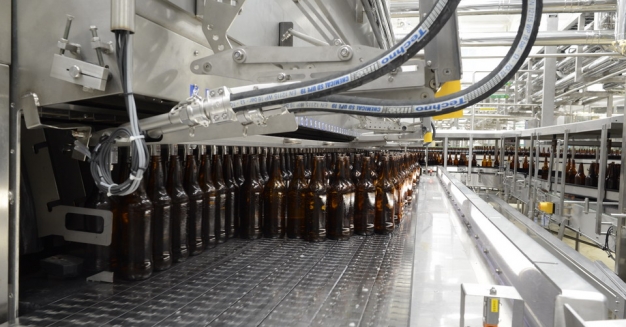Just a few months after launching a range of retrofit upgrades on its tunnel product line, Gebo continues to innovate on bottle washers. We are currently rolling out a brand new electronic bottle temperature regulating module, cutting down on water and energy consumption – the first solution of this kind on the market.
Comprising a new brick on our software and brand new hardware, the temperature regulating module is the fruit of meticulous research and testing in Gebo’s labs. And yet, the solution itself is elegant in its simplicity: an infra-red probe and bottle detector are positioned at the bottle-washer discharge point, recording data which is then used to regulate the flow of fresh water via a water infeed modulating valve.
The operator can use the HMI to set the maximum bottle discharge temperature, leaving the software to automatically set and control the flow of water. The result is a bottle-washing process finely calibrated to clean bottles to the required specifications while using 10% less water and up to 5% less steam.
Just a few months after launching a range of retrofit upgrades on its tunnel product line, Gebo continues to innovate on bottle washers. We are currently rolling out a brand new electronic bottle temperature regulating module, cutting down on water and energy consumption – the first solution of this kind on the market.
Comprising a new brick on our software and brand new hardware, the temperature regulating module is the fruit of meticulous research and testing in Gebo’s labs. And yet, the solution itself is elegant in its simplicity: an infra-red probe and bottle detector are positioned at the bottle-washer discharge point, recording data which is then used to regulate the flow of fresh water via a water infeed modulating valve.
The operator can use the HMI to set the maximum bottle discharge temperature, leaving the software to automatically set and control the flow of water. The result is a bottle-washing process finely calibrated to clean bottles to the required specifications while using 10% less water and up to 5% less steam.
